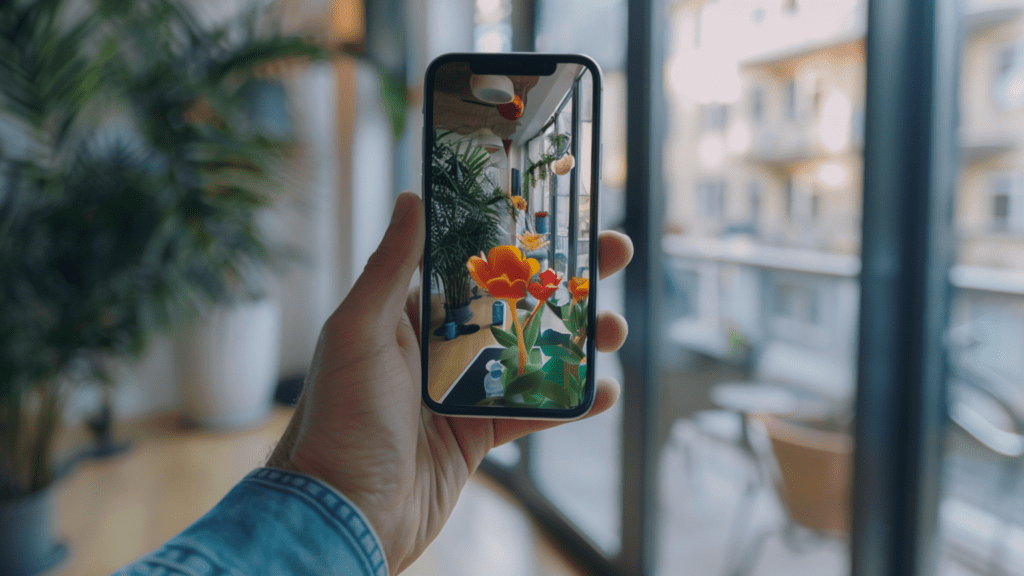Apple Vision Pro Development:
Experience Redefined

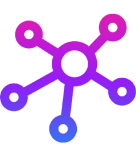

Pioneering the Future of Digital Experiences
User-Centric Design
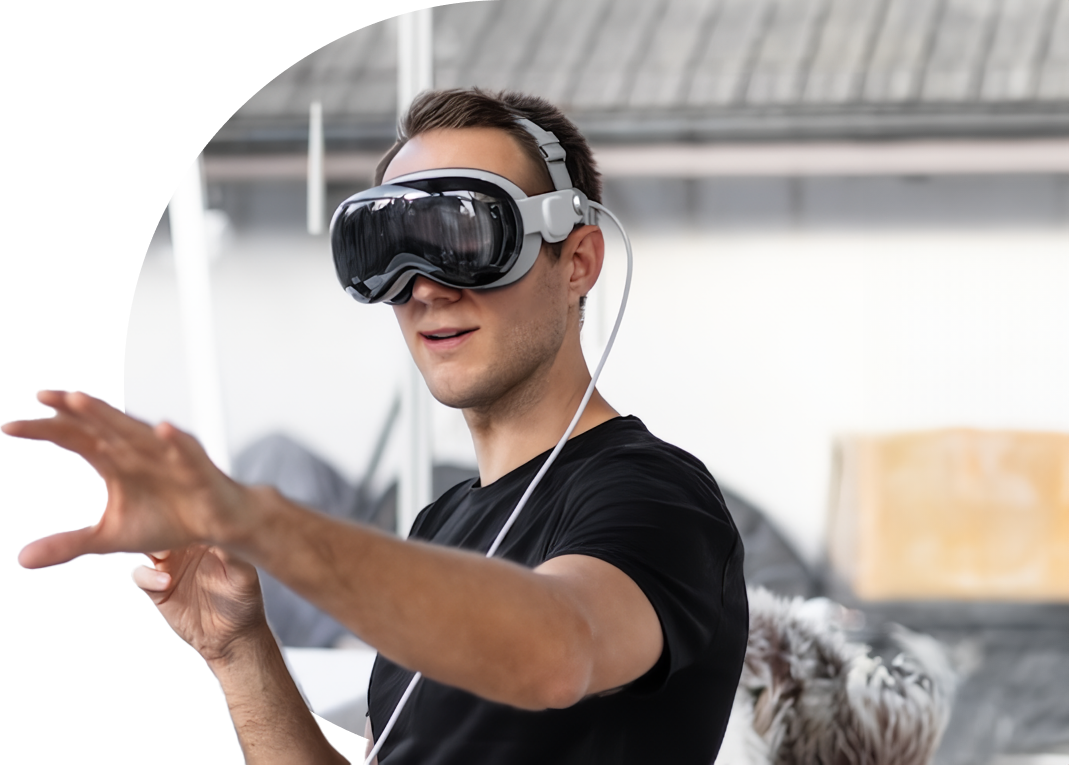
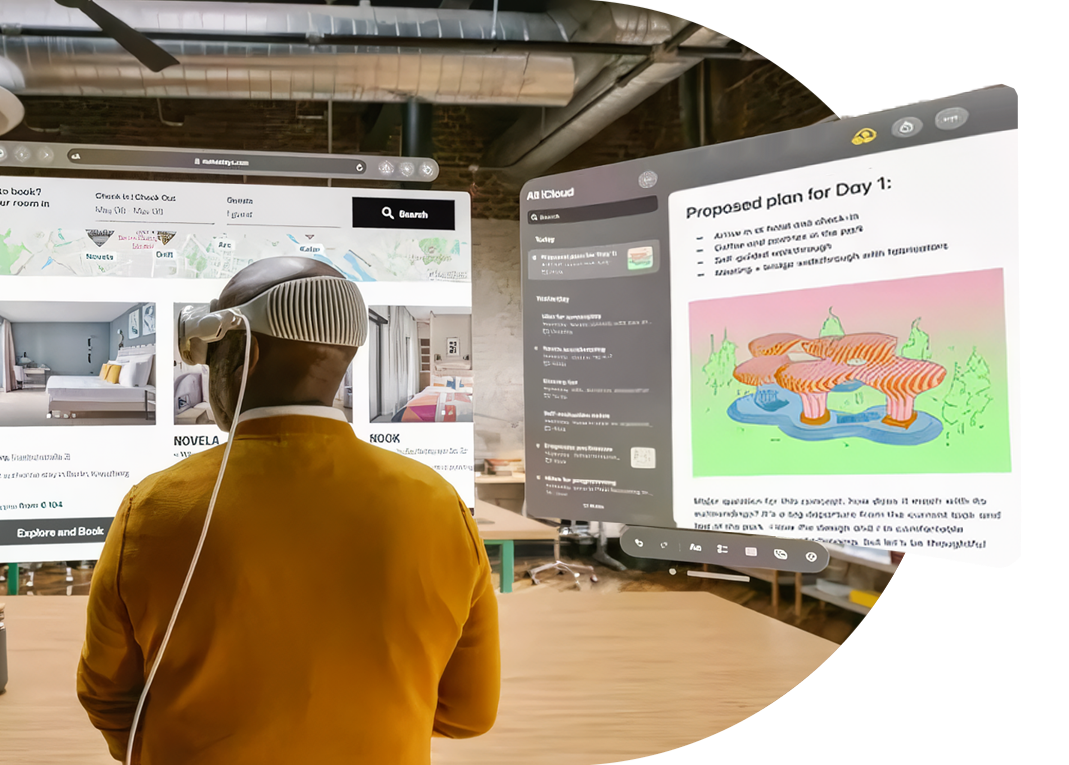
Integration of Advanced Technologies
Apple Vision Pro
Technical Characteristics
Custom micro-OLED display system featuring 23 million pixels
Twelve cameras and five sensors
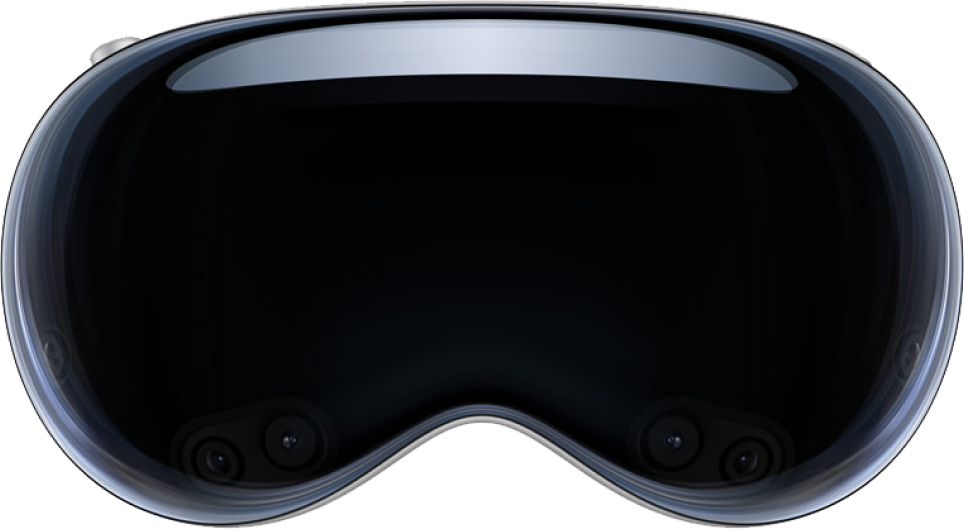
Six microphones
Eye tracking system of LEDs and infrared cameras
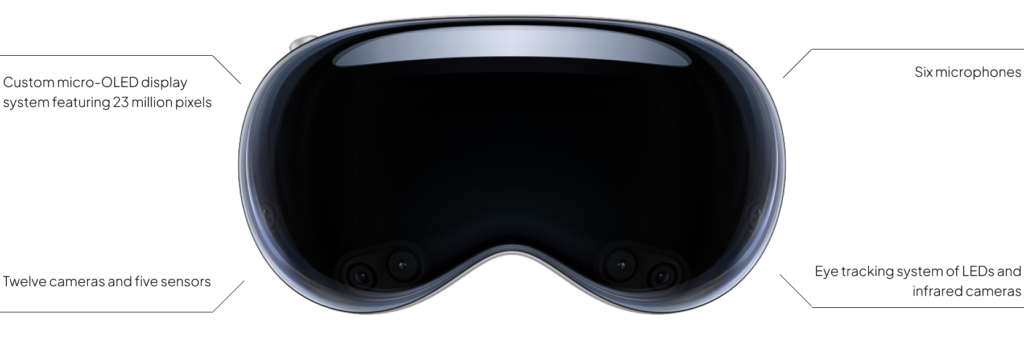
Bridge physical and digital realms through Augmented Reality
Key Areas of Development
Our development focus for Apple Vision Pro centers on augmented reality experiences and interactive applications. We aim to enhance user engagement across industries like gaming, education, and healthcare, leveraging the device’s capabilities for transformative digital interactions.
Immersive Training and Education
We design AR modules to simplify complex concepts, boost engagement, and improve learning outcomes for healthcare, corporate, and educational sectors.
Interactive Retail Experiences
Enhance shopping with virtual try-ons and product visualization, increasing customer engagement, conversion rates, and loyalty.
Innovative Marketing Campaigns
Create captivating campaigns with Apple Vision Pro, delivering immersive storytelling and stunning visual experiences.
Enhanced Remote Collaboration
Enable creative, real-time teamwork in immersive AR environments, fostering innovation and productivity.
Choosing Arkub means ...
Commitment to Innovation
Quality and Custom Deliverables
Proven Expertise
Responsiveness 24/7
AR expertise you can trust

Repeat Business
Cost-effective Solutions

Pioneers in the Region

Methodology
We begin by immersing ourselves in your vision, understanding your goals, target audience, and unique challenges. Through collaborative brainstorming sessions, we generate innovative ideas that will form the foundation of your project.

Methodology
With a clear understanding of your objectives, our team of designers and technologists bring your vision to life through sketches, wireframes, and conceptual designs. We refine these concepts iteratively, ensuring they align seamlessly with your brand identity and user experience goals.

Methodology
Once the concepts are finalized, we move into the prototyping phase. Using cutting-edge tools and technologies, we develop interactive prototypes that allow you to visualize and test the user experience firsthand, providing valuable insights for refinement.

Methodology
Rigorous testing ensures that the final product meets our high standards of quality and performance. We conduct user testing and feedback sessions to identify areas for improvement, iterating as necessary to optimize the user experience.

Methodology
With the project perfected, we prepare for launch. Whether it's an exhibition, event installation, digital campaign, or immersive application, we handle all aspects of deployment, ensuring a seamless and successful launch.
FAQ
What is the difference between AR, VR and MR?
Augmented Reality (AR), Virtual Reality (VR), and Mixed Reality (MR) are all immersive technologies, but they offer different experiences. AR overlays digital information, such as images or text, onto the real world through devices like smartphones or AR glasses, enhancing the users’ interaction with their physical surroundings without completely replacing it. In contrast, VR creates a fully immersive digital environment that users can explore using VR headsets, effectively transporting them away from the real world into a virtual one. Mixed Reality, on the other hand, combines aspects of both AR and VR, allowing digital objects to interact with the real world in real-time; users can not only see the virtual elements blended into their environment but also interact with them as if they were part of the real world. This blending of real and virtual worlds makes MR particularly compelling for applications in training, collaboration, and design.
How can AR/VR/MR benefit my business?
AR, VR, and MR can significantly benefit your business by enhancing customer engagement, improving training effectiveness, and facilitating innovative marketing strategies. AR can provide interactive experiences that allow customers to visualize products in their environment, leading to more informed purchasing decisions; for instance, an AR app can let customers see how furniture looks in their home before buying. VR can create immersive simulations for employee training, enabling them to practice skills in a safe environment without real-world consequences, which can improve retention and confidence. Additionally, MR can foster collaboration among teams by allowing them to manipulate digital objects in a shared physical space, enhancing creativity and project development. Overall, these technologies can lead to increased customer satisfaction, reduced training costs, and a competitive edge in the market through innovative product showcases and enhanced brand experiences.
What industries are best suited for AR/VR/MR applications?
AR, VR, and MR technologies are particularly well-suited for industries such as gaming and entertainment, where immersive experiences are paramount; retail and e-commerce, where AR can enhance product visualization for customers; healthcare, which utilizes VR for surgical training and AR for enhanced patient care; education and training, offering interactive learning environments; real estate and architecture, enabling virtual property tours and design visualizations; manufacturing and engineering, improving maintenance procedures with AR overlays; travel and tourism, providing virtual explorations of destinations; and advertising and marketing, creating engaging interactive campaigns. These industries leverage immersive technologies to enhance user experiences, drive engagement, and improve efficiency.
What do I need to get started with AR/VR/MR solutions?
To get started with an AR, VR, or MR solution, you need to begin by clearly defining your objectives and target audience, as this will guide the development process. Next, you should conduct thorough research to understand the specific technology that best suits your needs—whether it’s AR, VR, or MR—along with the required hardware, such as VR headsets, AR glasses, or compatible mobile devices. You will also need software development tools and platforms specialized for creating immersive content, like Unity, Unreal Engine, or specific AR SDKs. Collaborating with or hiring skilled developers and designers experienced in immersive technology is crucial to bring your vision to life. Additionally, consider a budget for hardware, software development, and potential marketing efforts to promote your solution once it’s launched. Finally, gather user feedback throughout the development process to ensure the final product effectively meets user needs and expectations.
How much does it cost to develop AR/VR/MR solutions?
The cost to develop AR, VR, or MR solutions can vary widely depending on several factors, including the complexity of the application, the technology used, the platforms targeted (like mobile or standalone devices), and the level of interactivity required. For basic AR applications, development costs might range from $10,000 to $50,000, while more advanced apps could range from $50,000 to $150,000 or more. VR development typically incurs higher costs due to the need for more sophisticated graphics and hardware compatibility, with projects often starting at $20,000 and reaching upwards of $200,000 for comprehensive experiences. Mixed Reality solutions tend to be even more expensive, as they require robust technology integrations and higher development expertise, which can push costs well above $100,000. Additionally, ongoing expenses for maintenance, updates, and marketing should be considered, making it essential for businesses to clearly define their project scope and budget from the outset.
Some of our clients












